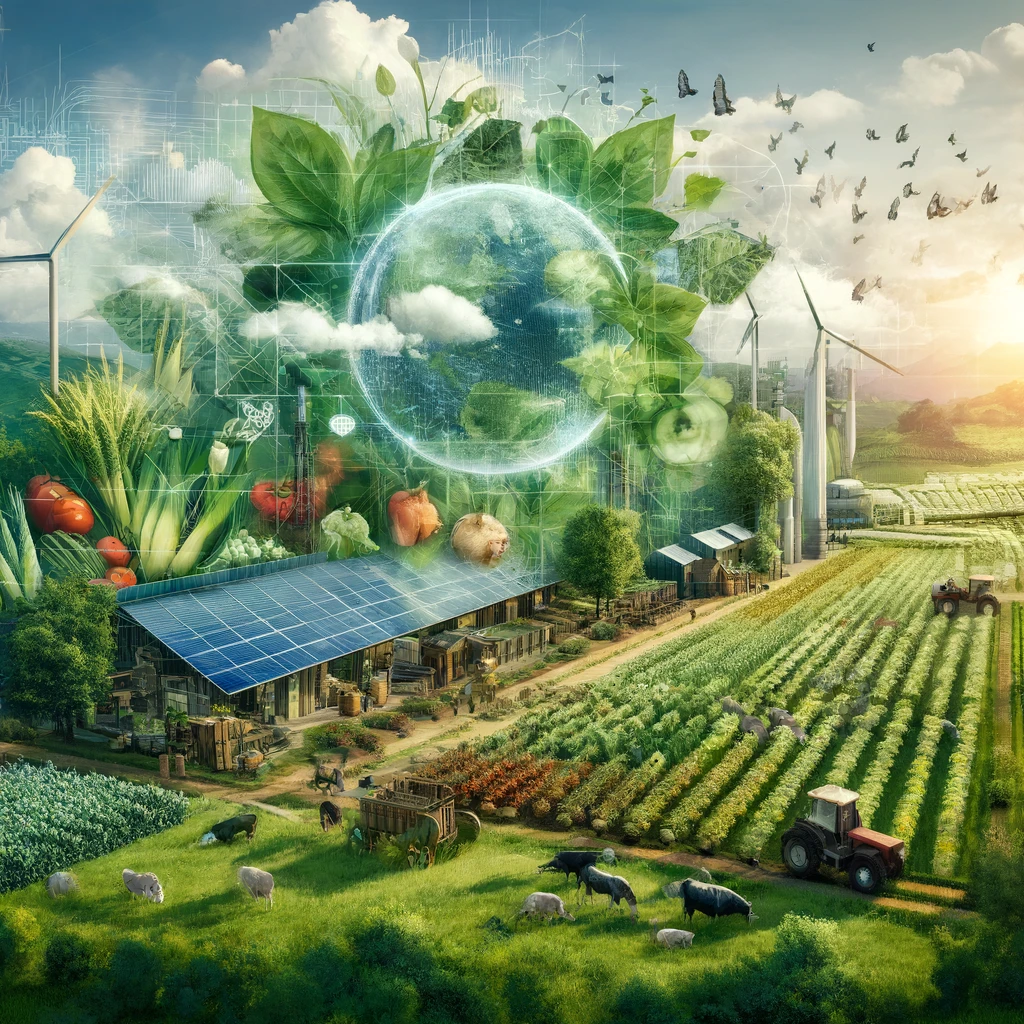Exploring the 2024 landscape: This report discusses how sustainable food and agriculture practices are transforming our planet, balancing economic viability with environmental stewardship and social equity.
Sustainable Food and Agriculture
Feeding a growing global population while protecting our planet is a critical challenge of the 21st century. Sustainable food and agriculture practices offer solutions that are not only environmentally friendly but also economically viable and socially responsible. This report explores the current landscape of the sustainable food and agriculture industry, highlighting key trends, challenges, and promising opportunities.
Industry Landscape
- Market Size and Growth: The global market for sustainable food products is projected to reach a staggering $1.5 trillion by 2027 [1]. Consumer demand for ethically sourced and environmentally responsible food is driving significant growth.
- Key Players: A diverse range of stakeholders are involved in the industry, including established agribusinesses adopting sustainable practices, innovative startups developing new technologies, and small-scale organic and regenerative farmers [2].
- Geographic Scope: Sustainable food and agriculture initiatives are taking root worldwide, with developed regions like Europe and North America leading the way in terms of market size and consumer awareness. However, developing countries are increasingly investing in sustainable practices to improve food security and resource management [3].
Industry Trends
- Regenerative Agriculture: This approach focuses on improving soil health, biodiversity, and water retention through practices like cover cropping, no-till farming, and compost application [4].
- Precision Agriculture: Utilizing data analytics, sensors, and automation empowers farmers to optimize resource use, minimize waste, and improve crop yields [5].
- Alternative Proteins: Consumers are increasingly opting for plant-based and lab-grown meat alternatives, driven by concerns about animal welfare and environmental impact [6].
- Urban Agriculture: Growing food in cities through vertical farms and rooftop gardens offers solutions for space-constrained environments and promotes local food systems [7].
Industry Challenges
- Consumer Affordability: Making sustainable food options more affordable and accessible to low-income consumers remains a challenge [8].
- Scaling Up Solutions: Transitioning large-scale conventional agriculture to sustainable practices requires significant infrastructure changes and investment [9].
- Food Waste Reduction: Addressing food waste throughout the supply chain, from farm to consumer, is critical for improving overall sustainability [10].
Industry Opportunities
- Technological Innovation: Advancements in areas like gene editing, biofertilizers, and vertical farming technologies hold immense potential for increased efficiency and sustainability [11].
- Carbon Sequestration: Sustainable agriculture practices can play a crucial role in capturing carbon from the atmosphere and mitigating climate change [12].
- Building a Circular Economy: Creating closed-loop systems where food waste is repurposed as compost or biogas can significantly reduce environmental impact.
Conclusion
The sustainable food and agriculture industry is at a pivotal juncture. While challenges exist, the growing consumer demand for environmentally conscious food, coupled with technological innovation and policy support, presents a significant opportunity to transform our food systems. Building a truly sustainable food future requires multi-stakeholder collaboration to create a system that is not only productive and efficient but also equitable and resilient.
Additional Information Sources
- climatechampions.unfccc.int/wp-content/uploads/2022/09/Assessing-the-financial-impact-of-the-land-use-transition-on-the-food-and-agriculture-sector.pdf
- www.gov.mb.ca/agriculture/protein/pubs/sustainable-protein-challenge-paper.pdf
Written by Lisa J Meier with research assistance by ChatGPT

